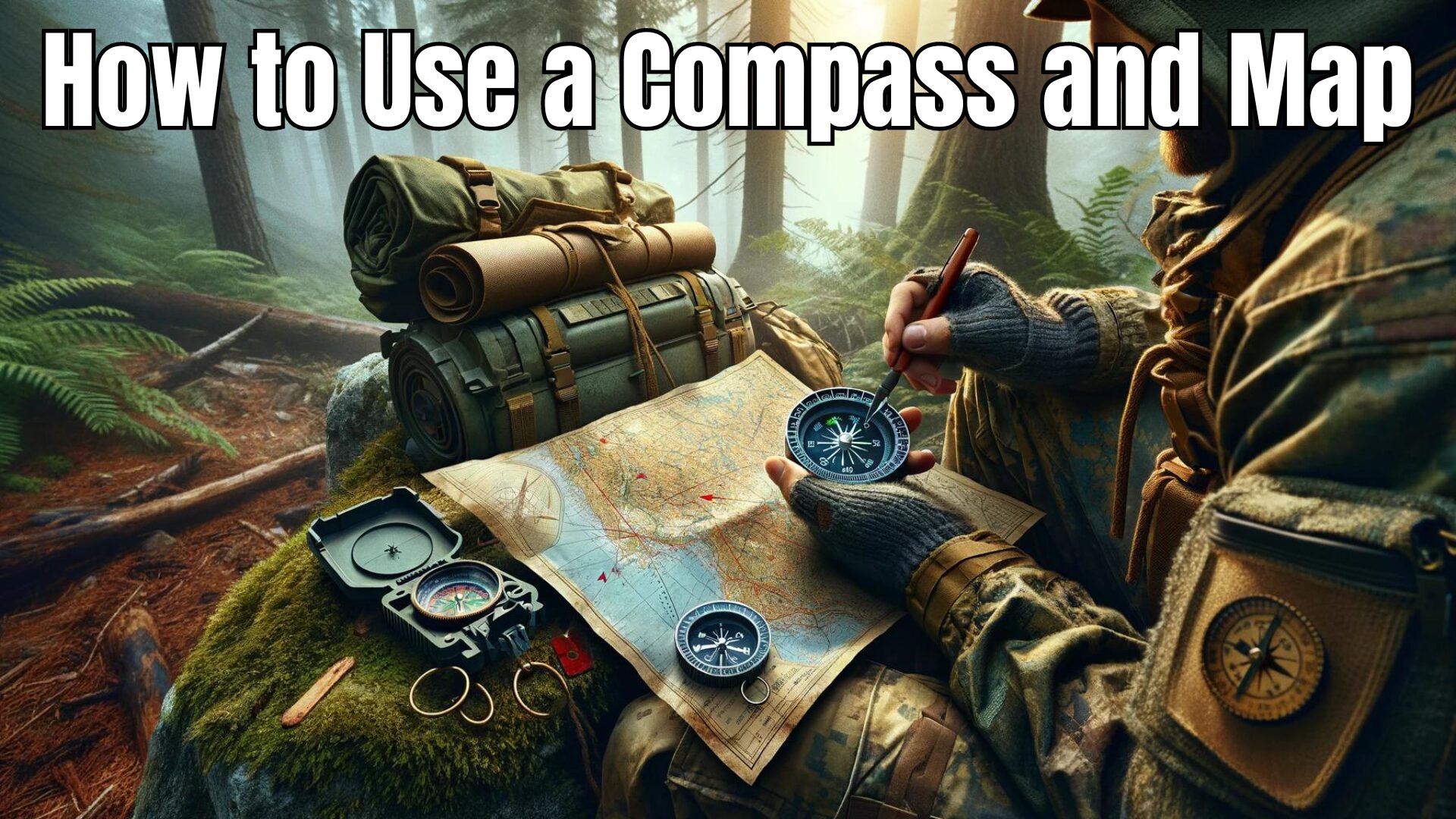Embarking on an outdoor adventure?
Mastering the use of a compass and map is your first step towards confidently navigating the wilderness.
Table of Contents
Using a Compass for Beginners: Navigate with Ease

How to Hold a Compass Correctly
When starting out with a compass, the first step is to ensure you hold it correctly for accurate readings.
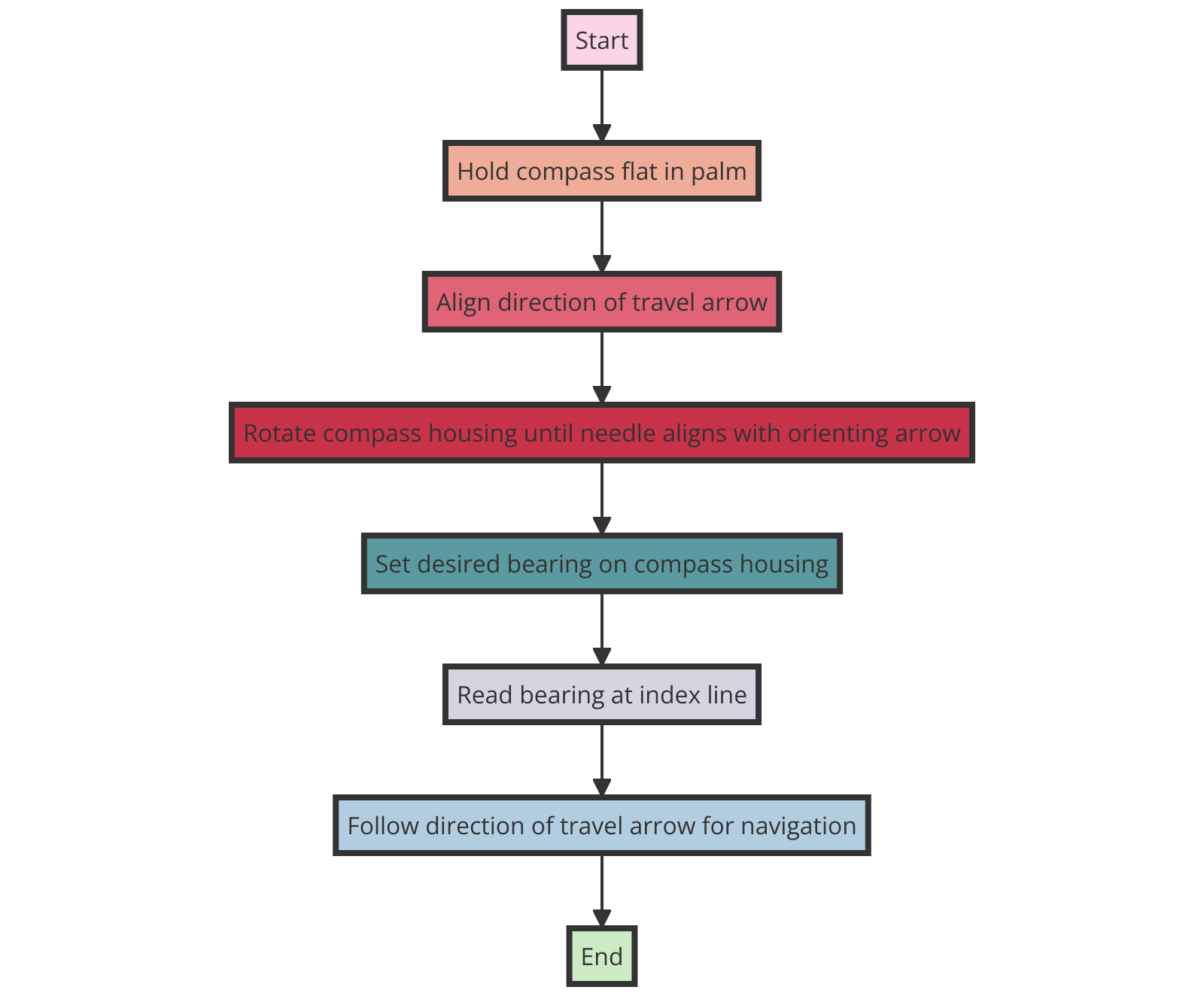
- Hold the compass flat in your palm with the direction of travel arrow pointing straight away from you.
- Make sure the compass housing is level and steady.
- Rotate your body and compass together until the orienting arrow aligns with the magnetic north indicator.
| Aspect | Common Mistakes | Correct Practices | Potential Errors |
|---|---|---|---|
| Holding Position | Holding tilted or at an angle | Hold flat and level | Incorrect readings due to misalignment |
| Finger Placement | Placing fingers over the compass dial | Keep fingers away | Magnetic interference causing inaccuracies |
| Magnetic Interference | Using near metal or electronics | Move away from metal and electronics | Deviation leading to inaccurate readings |
| Leveling | Not ensuring level when taking readings | Check and adjust bubble level | Inaccuracy due to misalignment with horizon |
| North Arrow Alignment | Misaligning north arrow with housing | Ensure arrow points to magnetic north | Misinterpretation of direction |
| Reading Compass Bearings | Misreading bearing from dial | Read carefully from direction-of-travel arrow | Misinterpretation leading to errors |
Using a Map and Compass Together
To effectively navigate with a compass and map, follow these steps:
- Find a landmark in your surroundings and identify it on the map.
- Orient the map so the top aligns with the north direction indicated by your compass.
- Use the declination adjustment to account for variance between magnetic north and true north.
- Rotate the map until the orienting arrow matches the compass needle, helping you read the map in correct orientation.
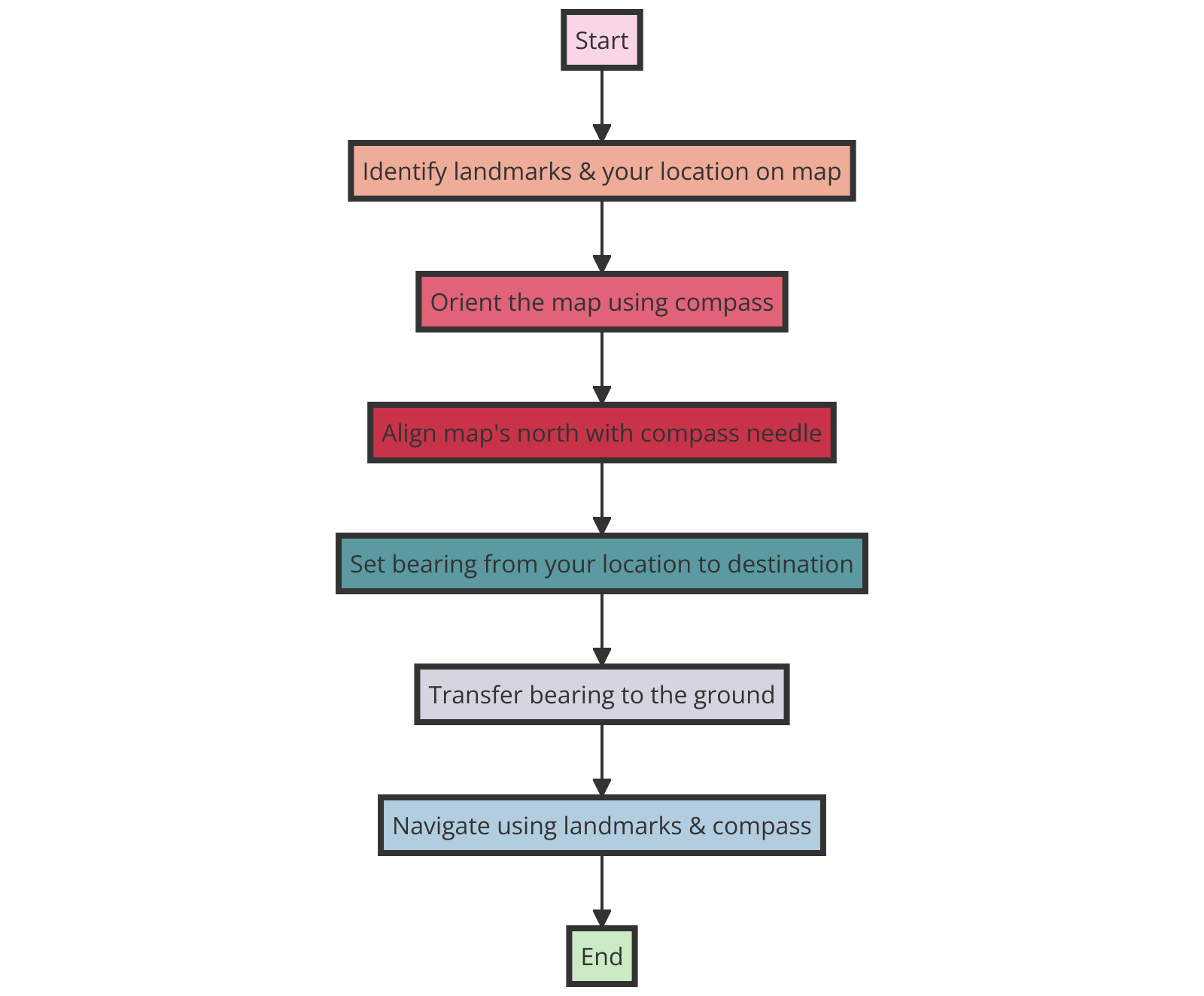
Declination Explained: Magnetic North vs. True North

Understanding Declination
When using a compass, it’s crucial to grasp the concept of declination.
True north is the geographic north pole, while magnetic north is where the magnetic needle points.
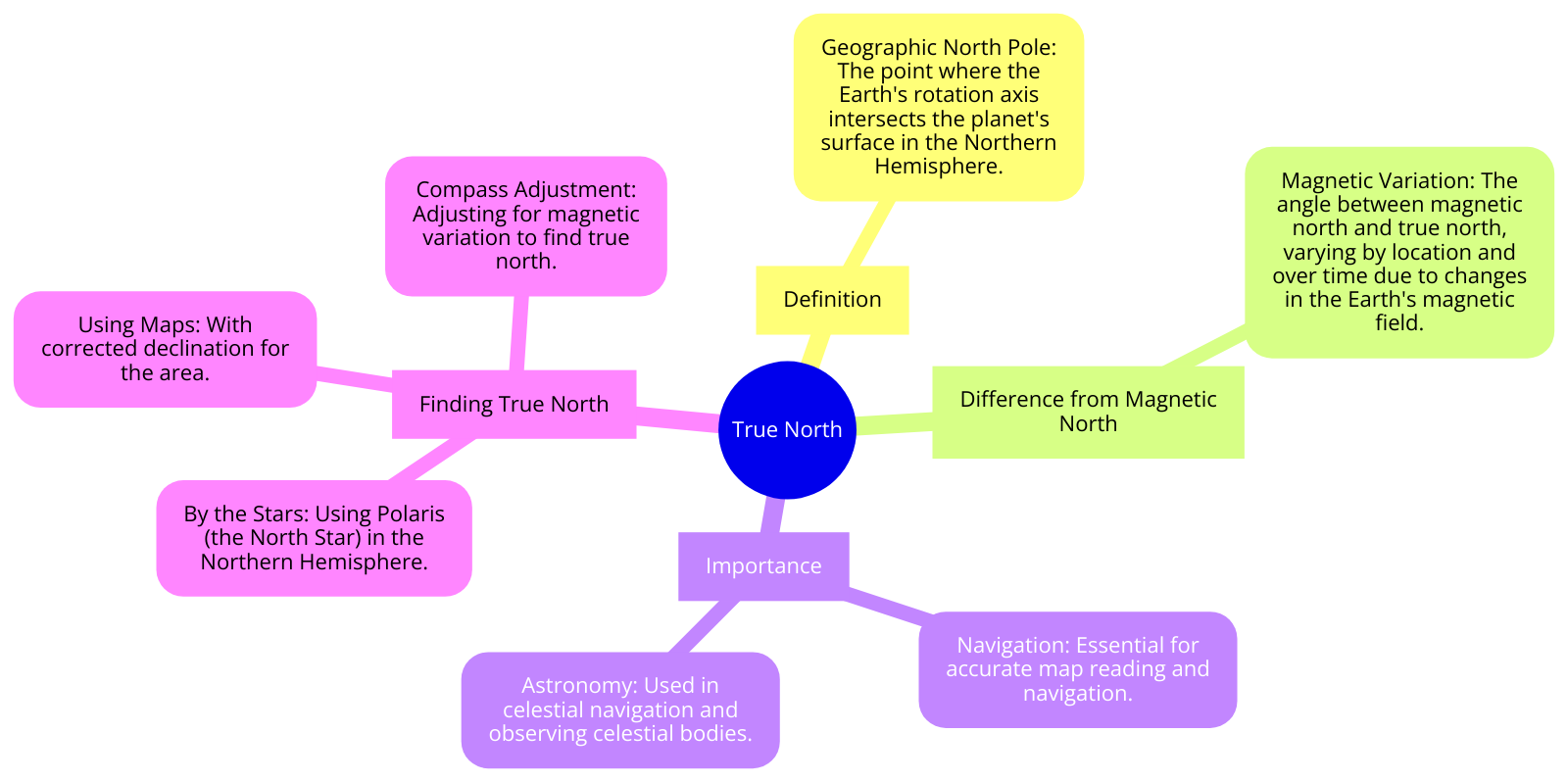
To adjust for this variance, you need to orient your map correctly.
To do this, align the edge of the compass with the map’s index line and point the orienting lines to true north.
| City | Country | Declination (degrees) |
|---|---|---|
| New York City | USA | -12.4 |
| Los Angeles | USA | 12.3 |
| London | UK | -0.5 |
| Paris | France | 0.9 |
| Tokyo | Japan | 7.1 |
| Sydney | Australia | 12.6 |
| Moscow | Russia | 8.5 |
| Beijing | China | -5.4 |
| Rio de Janeiro | Brazil | -21.0 |
| Cape Town | South Africa | 25.0 |
It’s like ensuring your compass is speaking the same language as your topographical map.
Taking a Bearing
For beginners, mastering how to account for declination is key to successful navigation.
Always remember to take a bearing, which involves reading the direction your compass needle is pointing towards.
Familiarize yourself with orienting your map so that magnetic north and true north line up correctly.
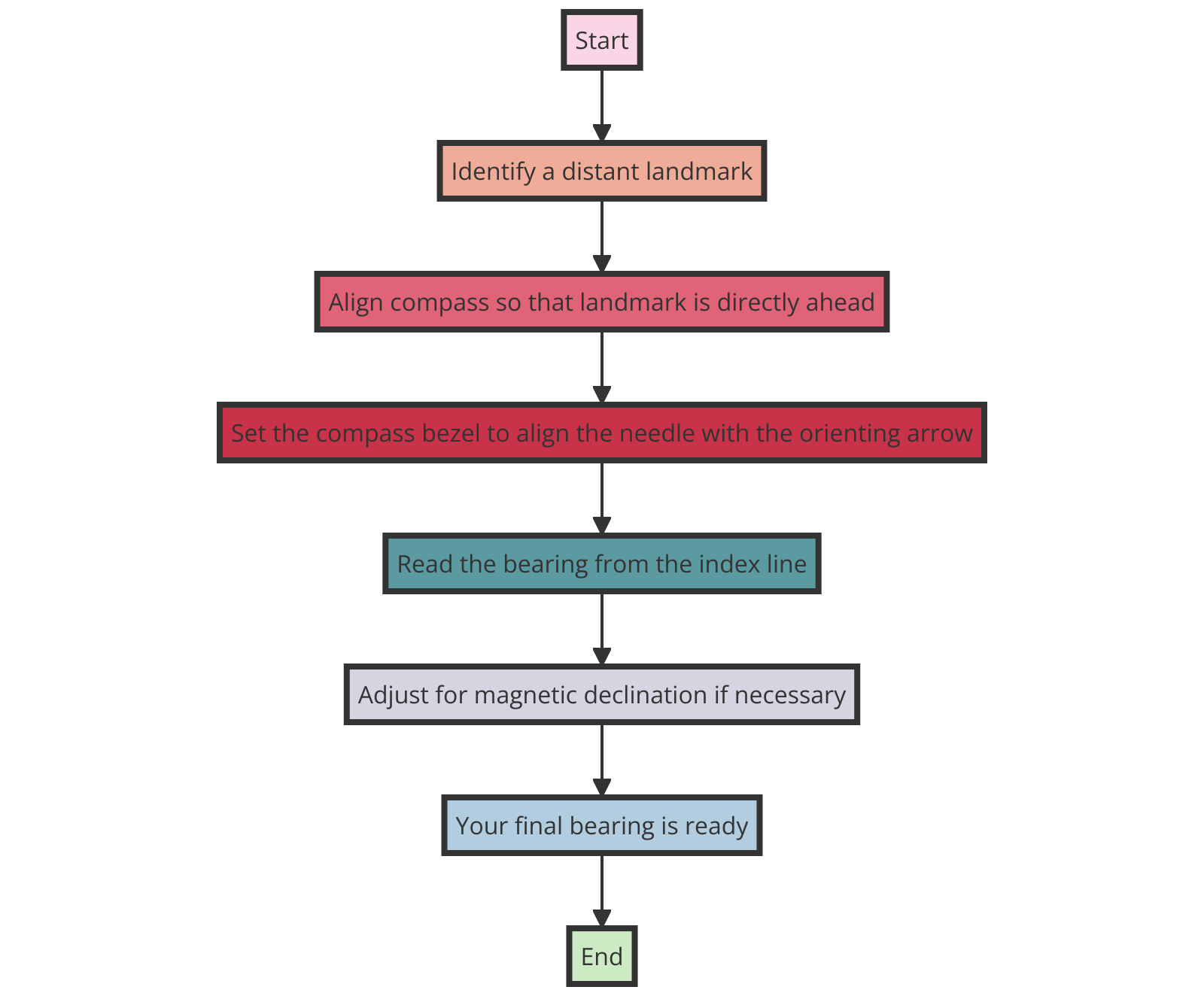
Once you’ve nailed down this fundamental skill, navigating with your compass becomes a breeze.
Map Orientation Techniques: Navigate Like a Pro

Basics of Using a Compass and Map
Learning to use a compass and map effectively is crucial for navigating in the wilderness.
Begin by placing the compass on the map and ensuring that the arrow on the compass points to magnetic north.
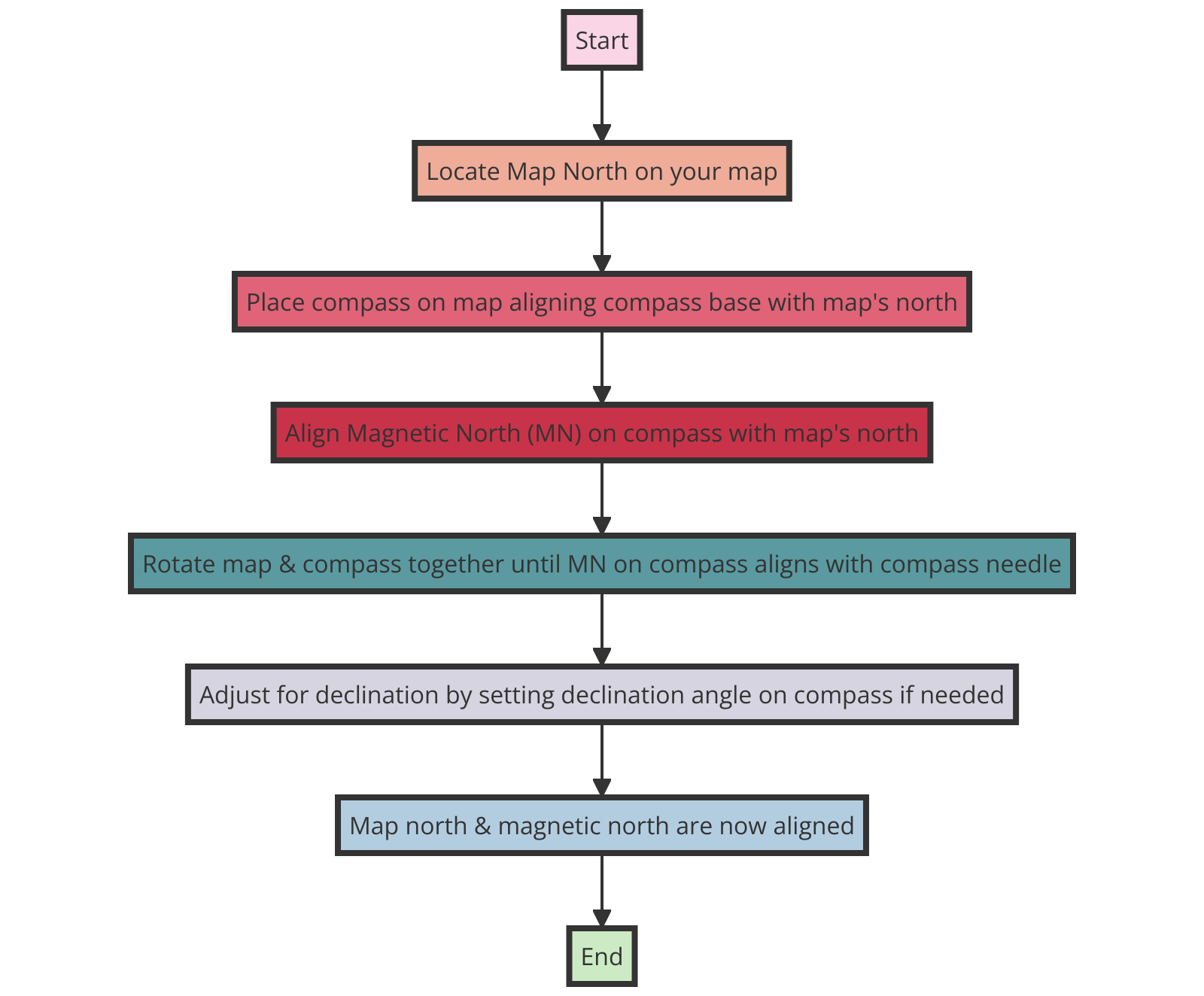
This aligns the compass with the magnetic field, allowing you to accurately follow the direction indicated by the compass needle.
| Aspect | Correct Orientation | Incorrect Orientation |
|---|---|---|
| Directional Accuracy | Accurate depiction | Distorted directions |
| Route Planning | Easy route planning | Difficult planning |
| Distance Estimation | Accurate distance | Inaccurate estimation |
| Landmark ID | Clear landmark matches | Difficulty identifying |
| Compass Use | Seamless integration | Confusion with compass |
Aligning Map North with Compass North
To orient yourself correctly, it is essential to align north on the map with the north indicated by your compass.
This step is vital for accurate navigation, especially in challenging terrains.
By understanding how to set up your compass and map in sync, you can confidently navigate through the wilderness, ensuring you reach your desired destinations efficiently.
Compass Types: Choosing the Right Tool for Navigation

Understanding the Basics
When venturing into the great outdoors, a compass is an essential tool for finding your way.
| Compass Type | Pros | Cons |
|---|---|---|
| Baseplate | Lightweight, easy to use with maps | Requires flat surface |
| Inexpensive, clear baseplate | Less durable | |
| Lensatic | Durable, precise sighting | Heavier and bulkier |
| Works well in rugged terrain | Requires practice | |
| Digital | Easy to read display, precise | Relies on batteries |
| Multiple features | Susceptible to malfunctions |
To begin, orient the baseplate compass by aligning it with a bearing from a map or pointing the lensatic compass toward a landmark.
Next, twist the compass housing until the red end of the needle aligns with the orienting arrow.
Navigating Without a Map
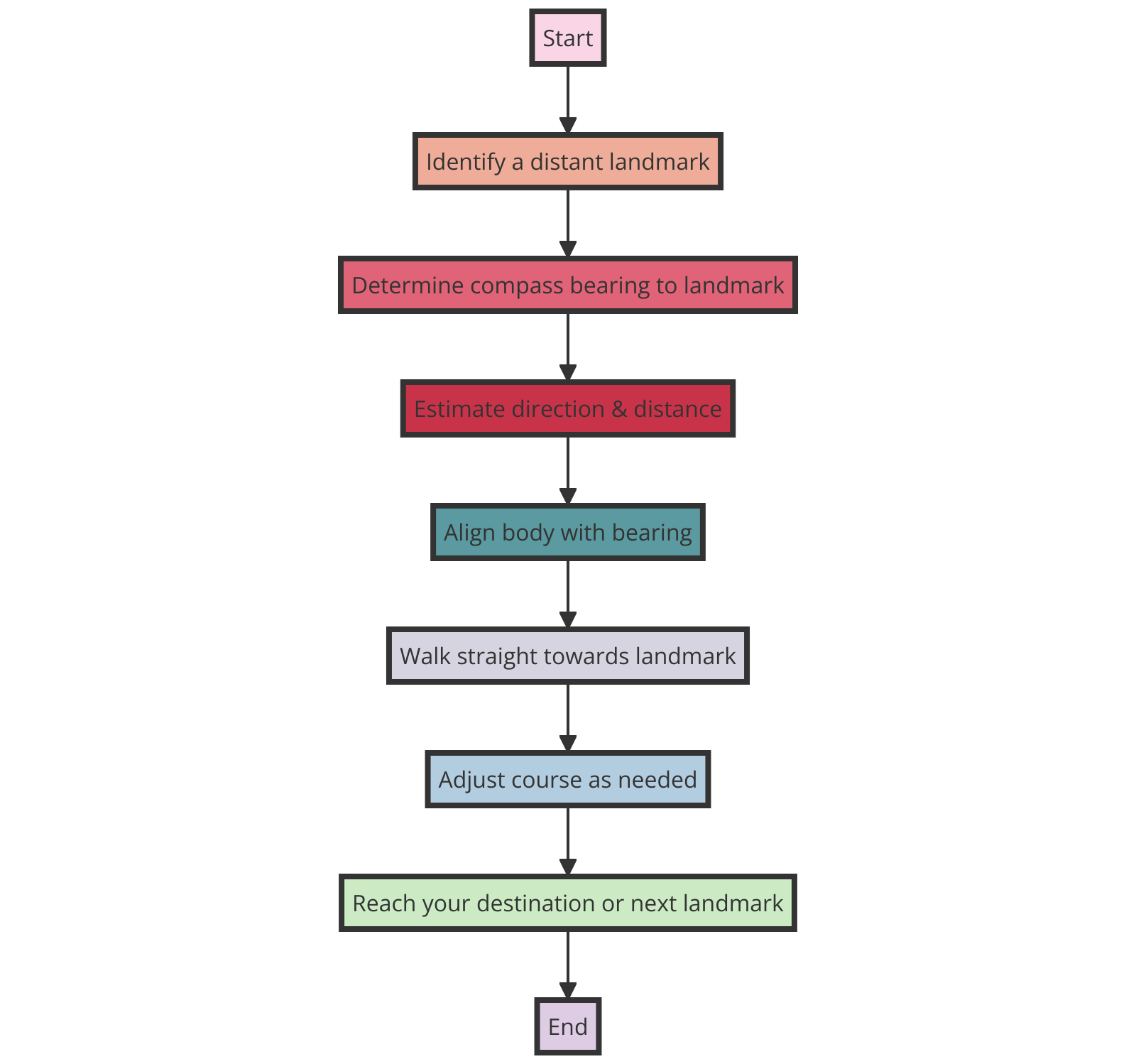
“Without a map, your compass leans on your intuition and knowledge of the landscapes.”
Sara Kim, Expedition Leader
Plotting Your Course: Basic Navigation Skills

Learning the Basics of Using Your Compass
When it comes to plotting your course in the wilderness, learning the basics of using a compass is essential.
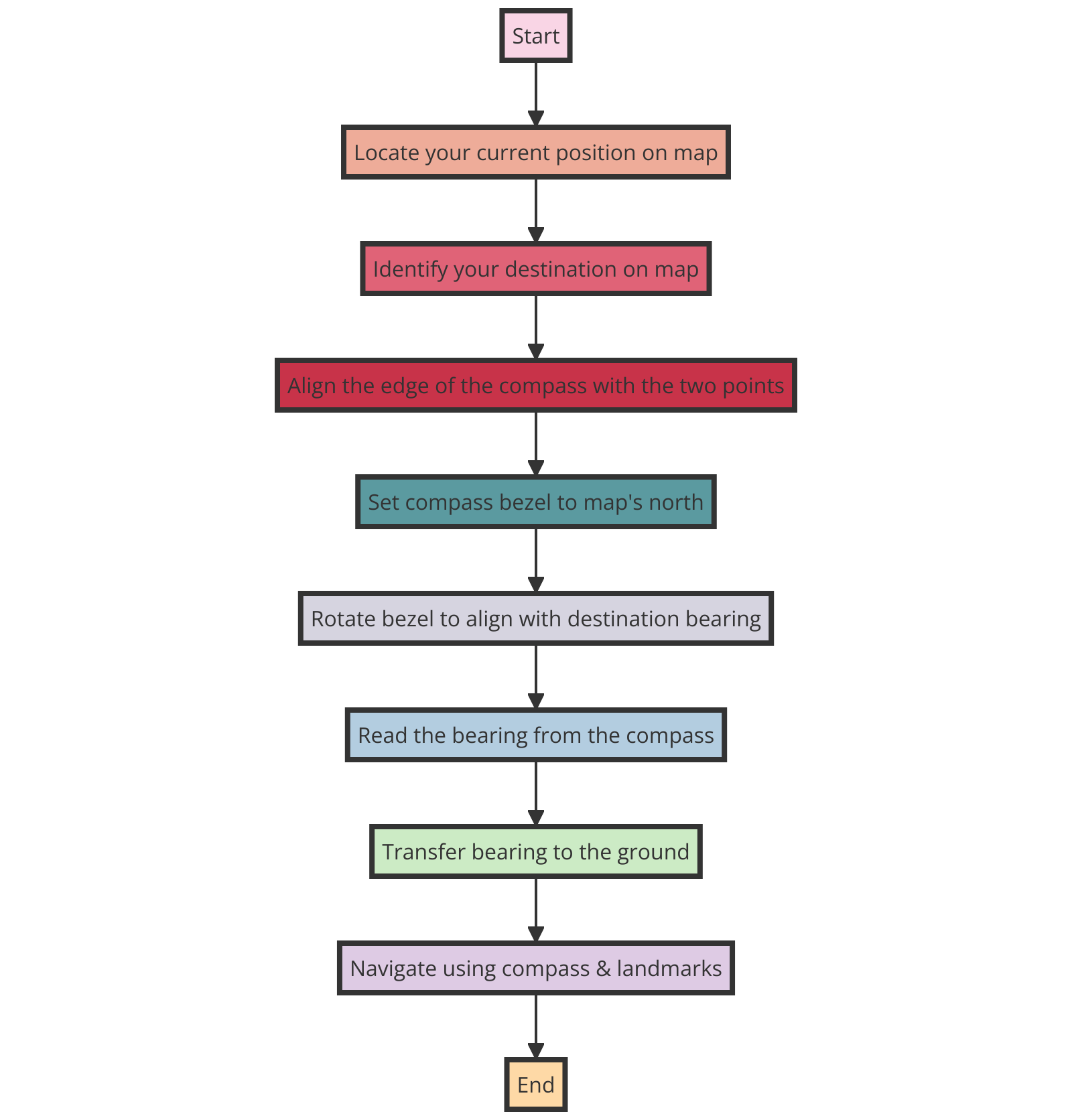
- Begin by placing the edge of your compass on the desired route you want to follow on the map.
- Rotate the compass housing until the lines within the compass housing align parallel to the edge of your compass.
- Next, carefully position the entire compass so that the red end of the compass needle is pointing towards the north on the compass rose at the top of the map.
| Common Errors | Avoidance Tips |
|---|---|
| Inaccurate Scale | Match map scale with plotted points, use ruler for precision. |
| Incorrect Coordinates | Double-check coordinates, verify with grid lines or landmarks. |
| Misalignment | Align points accurately with map features, use landmarks for reference. |
| Overlapping Points | Space out points, use clear symbols or colors to differentiate. |
| Unclear Symbols | Use clear symbols and labels, prioritize important information. |
| Declination | Adjust compass for declination, refer to declination diagram if needed. |
| Map Legend | Consult map legend for symbol explanations, understand map symbols. |
| Route Planning | Plan routes in advance, consider terrain and landmarks for navigation. |
| Compass Calibration | Calibrate compass before use, ensure needle aligns with north. |
Utilizing the Compass for Navigation
Once you have aligned your compass with the map, you are ready to navigate using the compass to stay on course.
“Your compass points you to your destination, but it’s your steps that take you there.”
Mia Zhang, Professional Hiker
With the compass base plate still on the landmark, face the landmark on the map while holding the compass level.
Now, rotate the compass housing until the end of the compass needle aligns with the red end of the compass.
Topographical Maps: Understand and Utilize

Reading the North Arrow and Travel Arrow
When using a topographical map, the north arrow is your best friend.
This arrow always points towards magnetic north, helping you orient the map in the right direction.
The travel arrow is equally crucial; it shows the direction you should follow while navigating.
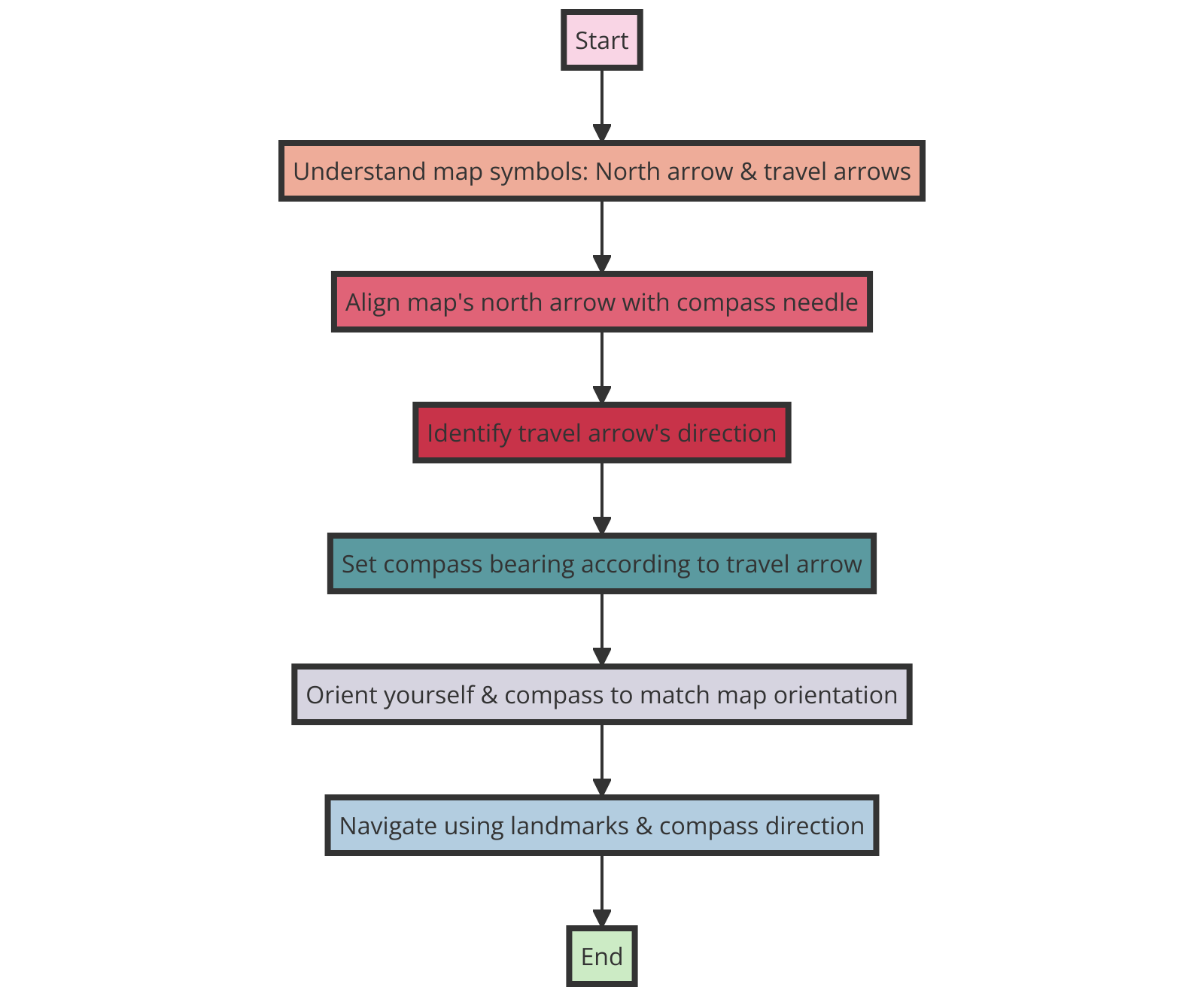
To ensure your map is correctly aligned, place your map in front of you and the field compass along the north arrow.
| Symbol | Meaning |
|---|---|
| Mountain | Peak or summit |
| Contour Lines | Elevation changes |
| River/Stream | River or stream |
| Road | Roads or highways |
| Trail | Hiking or foot trails |
| Building | Man-made structures |
| Forest | Forested areas |
| Lake/Pond | Lake or pond |
| Glacier | Glaciers or snowfields |
| Summit Cross | Highest point of a mountain |
| Cave | Cave or underground feature |
| Airport | Airport or airfield |
Using Different Types of Compasses
As an adventurer or outdoor enthusiast, it’s essential to learn to use a compass effectively for accurate navigation.
Various types of compasses are available, each with its unique features.
Depending on the model, you may need to add or subtract a specific degree from your map to get the correct reading.
Wilderness Survival: Orienting and Navigating Tips

Navigating with Different Types of Compasses
When out in the wilderness, know your current position on modern maps or by landmarks.
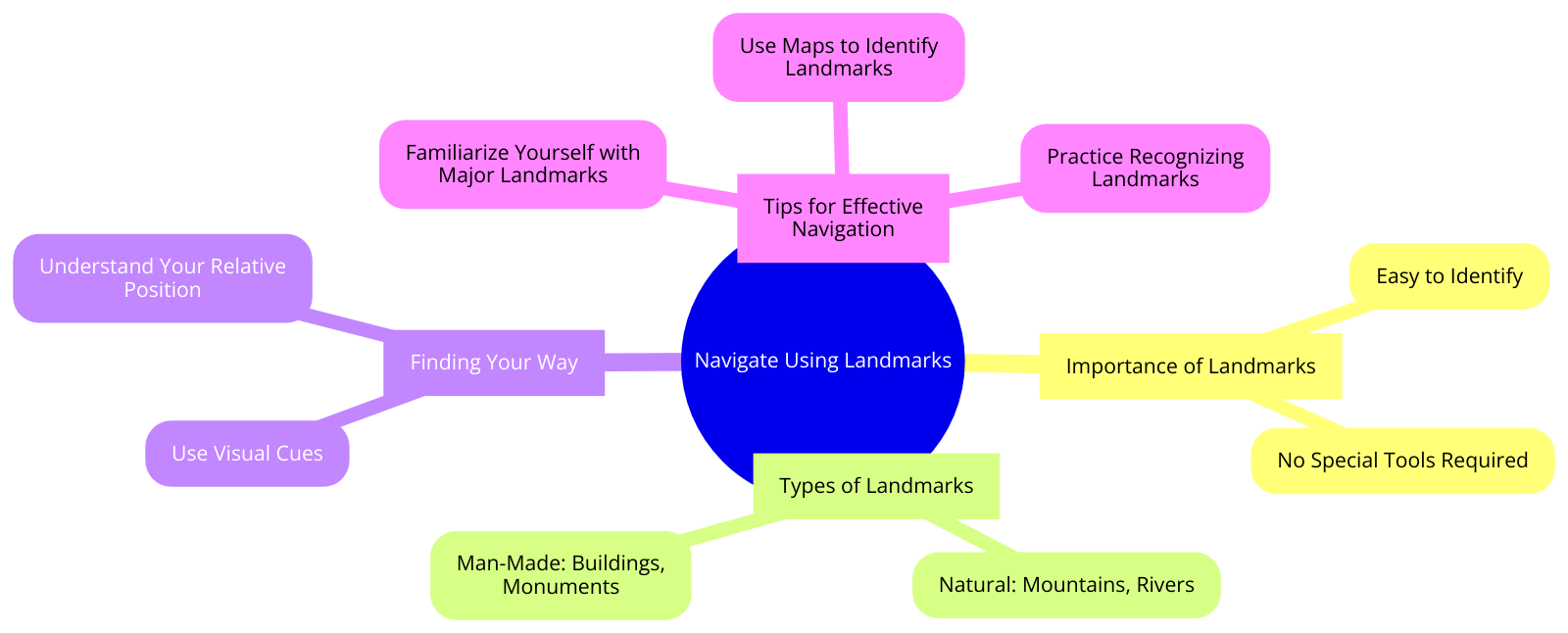
Hold your compass flat in front of you, making sure the baseplate is level.
While pointing in the direction you want to go, rotate the housing until the direction of travel arrow pointing is aligned with the north on the compass.
Orienting and Navigating in the Wilderness
To orient yourself in the wilderness, find a landmark or a recognizable natural feature on the map and match it with what you see around you.
Use your compass to ensure your map is aligned with the orienting arrow.
Know your current position and where you want to head.
| Aspect | Navigating with a Compass | Navigating without a Compass |
|---|---|---|
| Directional Accuracy | Accurate navigation with cardinal directions | Relies on natural landmarks or sun/moon for direction |
| Route Planning | Easy to plan routes using bearings and maps | Requires more time and effort for route planning |
| Precision | Provides precise bearings for accurate navigation | May result in imprecise or circuitous routes |
| Confidence | Increases confidence in navigation decisions | May lead to hesitation or uncertainty |
| Time Efficiency | Saves time by providing direct routes | May lead to time-consuming detours or backtracking |
| Emergency Situations | Useful for finding help or safety quickly | Increases risk of getting lost or disoriented |
| Environmental Awareness | Enhances understanding of surroundings | Relies more on observation and intuition |
| Resilience | Improves resilience in challenging terrain | Increases vulnerability in unfamiliar environments |
When navigating, keep checking your compass to stay on track.
Be mindful of any deviations and make adjustments as needed.
Stay vigilant and regularly cross-reference your map and compass to avoid getting lost.
More Resources:
- REI provides a comprehensive guide on using a compass alongside maps, covering everything from reading bearings to adjusting for declination. A perfect resource for beginners and seasoned adventurers alike. Visit their page for more insights: REI Expert Advice.
- Ordnance Survey offers detailed steps on how to use a compass, from aligning your map to adjusting for magnetic variation, along with practical tips for beginners. Check out their guide here: OS GetOutside.
- Cool of the Wild breaks down the types of compasses, compass anatomy, and provides a beginner’s guide to using a compass with a map, including how to take a compass bearing. Dive into their beginner’s guide for more: Cool of the Wild.
- The Prepared offers a practical approach to map orientation and plotting a course with a compass, including tips on evaluating terrain and estimating pace count. For those looking to delve deeper into navigation skills, visit: The Prepared.
- Backpacker Magazine shares insights on using a map and compass for hikers, including how to align your compass with your map and interpret the information correctly to find your way. A must-read for hikers at: Backpacker.


